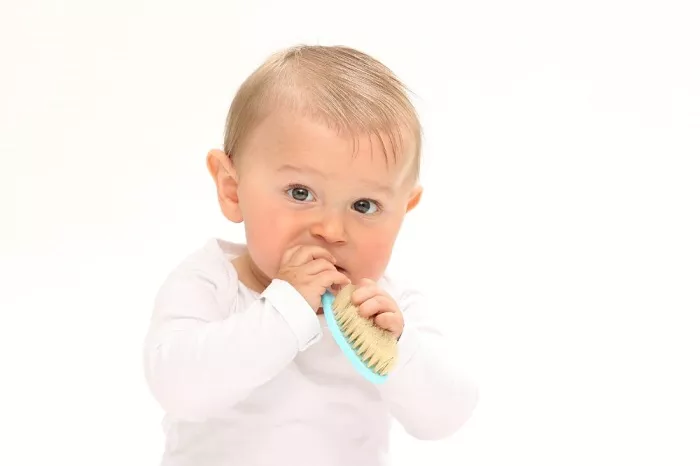Eating non – food items such as hair is a concerning behavior that many parents may encounter. This behavior, known as pica, can have various underlying causes when it comes to children. In this article, we will explore the possible reasons why a child might engage in hair – eating behavior.
Nutritional Deficiencies
Iron Deficiency
One of the common reasons for pica behaviors including eating hair could be an iron deficiency.
When a child’s body lacks sufficient iron, it can disrupt normal physiological functions. The body may send signals that prompt the child to seek out unusual substances in an attempt to fulfill the missing nutrient. Hair contains some trace elements, and in the case of an iron – hungry body, the child may be unconsciously attracted to it. Iron is crucial for the production of hemoglobin in red blood cells, which carry oxygen throughout the body. If the diet lacks iron – rich foods like red meat, beans, and leafy greens, or if there are issues with iron absorption, the risk of deficiency increases.
Zinc Deficiency
Zinc is another essential nutrient that plays a vital role in a child’s growth and development. It is involved in many enzymatic reactions in the body. A zinc – deficient child may exhibit pica. Zinc deficiency can occur due to poor dietary intake, as zinc is found in foods like nuts, whole grains, and dairy products. When the body lacks zinc, it can affect the sense of taste and smell, which might lead the child to explore different textures and substances, including hair. Additionally, zinc is important for a healthy immune system and proper wound healing. A lack of it can have multiple consequences on the child’s overall well – being and behavior.
Psychological Factors
Stress and Anxiety
Children, just like adults, can experience stress and anxiety. Changes in the family environment, such as a new sibling, moving to a new house, or problems at school, can cause psychological distress.
Eating hair might be a way for the child to self – soothe. It provides a repetitive and somewhat calming action. Similar to how some children suck their thumbs or twirl their hair when they are nervous, eating hair can be an extreme form of this coping mechanism. The child may not be fully aware of why they are doing it, but the act itself gives them a sense of comfort during difficult times.
Attention – Seeking
In some cases, a child may eat hair as a way to get attention from parents or caregivers. If they notice that this unusual behavior elicits a strong reaction from the adults around them, they may continue to do it. Even negative attention can be rewarding for a child who feels ignored or wants more interaction. It’s important for parents to be aware of how they respond to such behaviors to avoid inadvertently reinforcing them.
Behavioral and Developmental Issues
Autism Spectrum Disorder (ASD)
Children with ASD may exhibit pica behaviors, including eating hair. They often have sensory processing differences. The texture of hair may be appealing to them in a way that is difficult for neurotypical individuals to understand. These children may have a need for oral stimulation, and hair provides a unique tactile experience. Additionally, the repetitive nature of putting hair in the mouth and chewing it can be part of their self – stimulatory behaviors that are common in ASD.
Intellectual Disabilities
Children with intellectual disabilities may also engage in pica. Their understanding of appropriate and inappropriate behaviors may be limited. They may not be able to distinguish between food and non – food items as clearly as other children. In such cases, supervision and specialized training are necessary to help them learn what is safe to eat and what is not. The cause of the intellectual disability, whether it’s genetic, due to prenatal issues, or other factors, can further complicate the situation, but addressing the pica behavior is an important part of their overall care.
Environmental Factors
Imitation
Children are great imitators. If they observe someone else, perhaps an older sibling or a peer, engaging in an unusual behavior like playing with or putting hair in the mouth, they may copy it.
This is especially true in younger children who are still learning social norms and appropriate behaviors. Parents should be vigilant about the behaviors of those around their child to identify any potential sources of imitation.
Accessibility of Hair
The simple fact that hair is readily available can contribute to the behavior. If a child has long hair themselves or is constantly in an environment with loose hair (such as on the floor, on furniture), they may be more likely to put it in their mouth. Keeping the environment clean and managing the child’s hair can help reduce the opportunity for hair – eating.
Conclusion
When a child shows a behavior like eating hair, it is a cause for concern and requires careful investigation. By considering possible nutritional deficiencies, psychological factors, behavioral and developmental issues, and environmental factors, parents and caregivers can start to understand the root of the problem. It is essential to approach the situation with patience and seek professional help if needed. A pediatrician, psychologist, or nutritionist can provide valuable guidance in determining the cause and implementing appropriate strategies to stop the behavior and ensure the child’s healthy development.
Related Topics:

